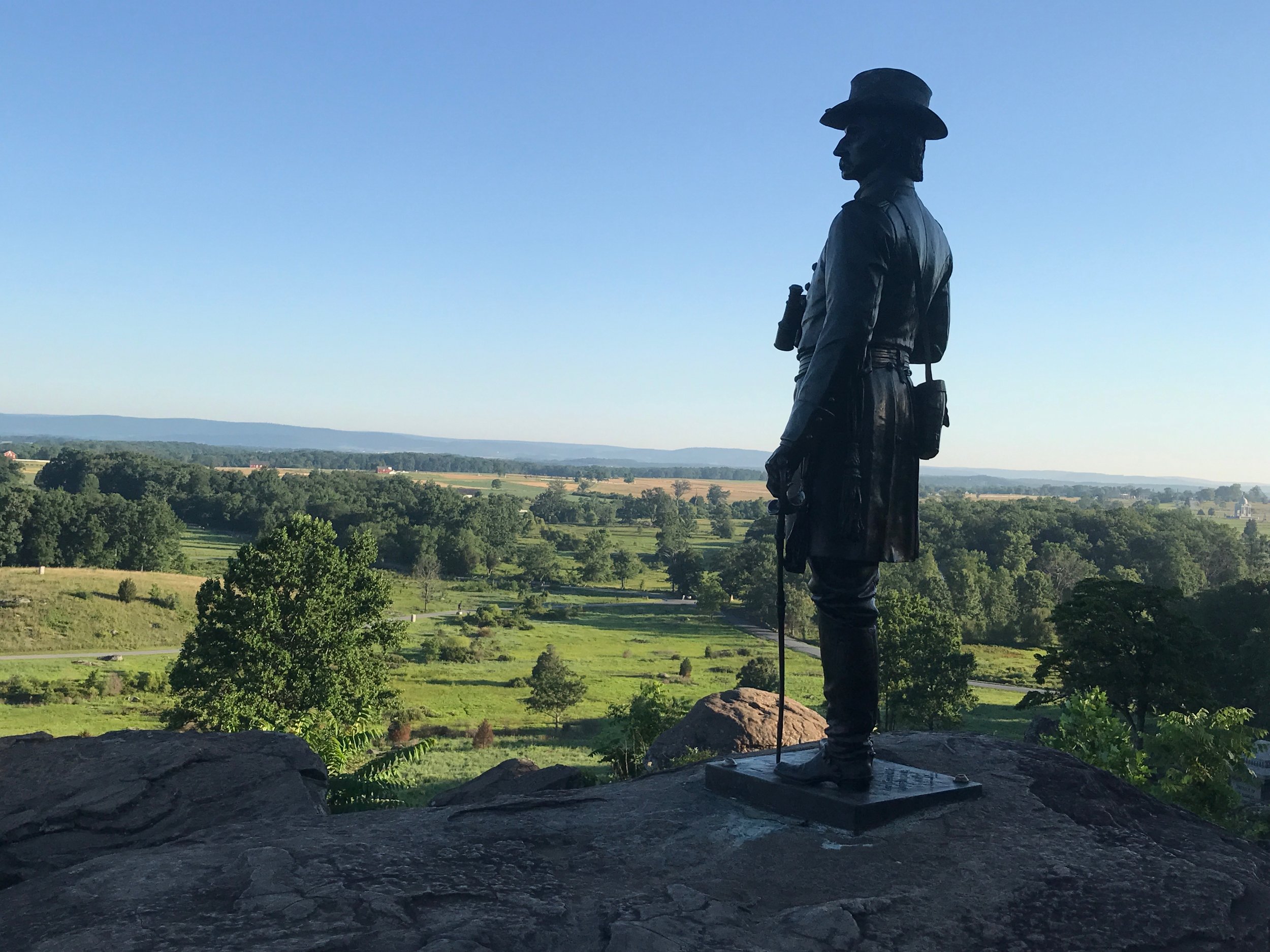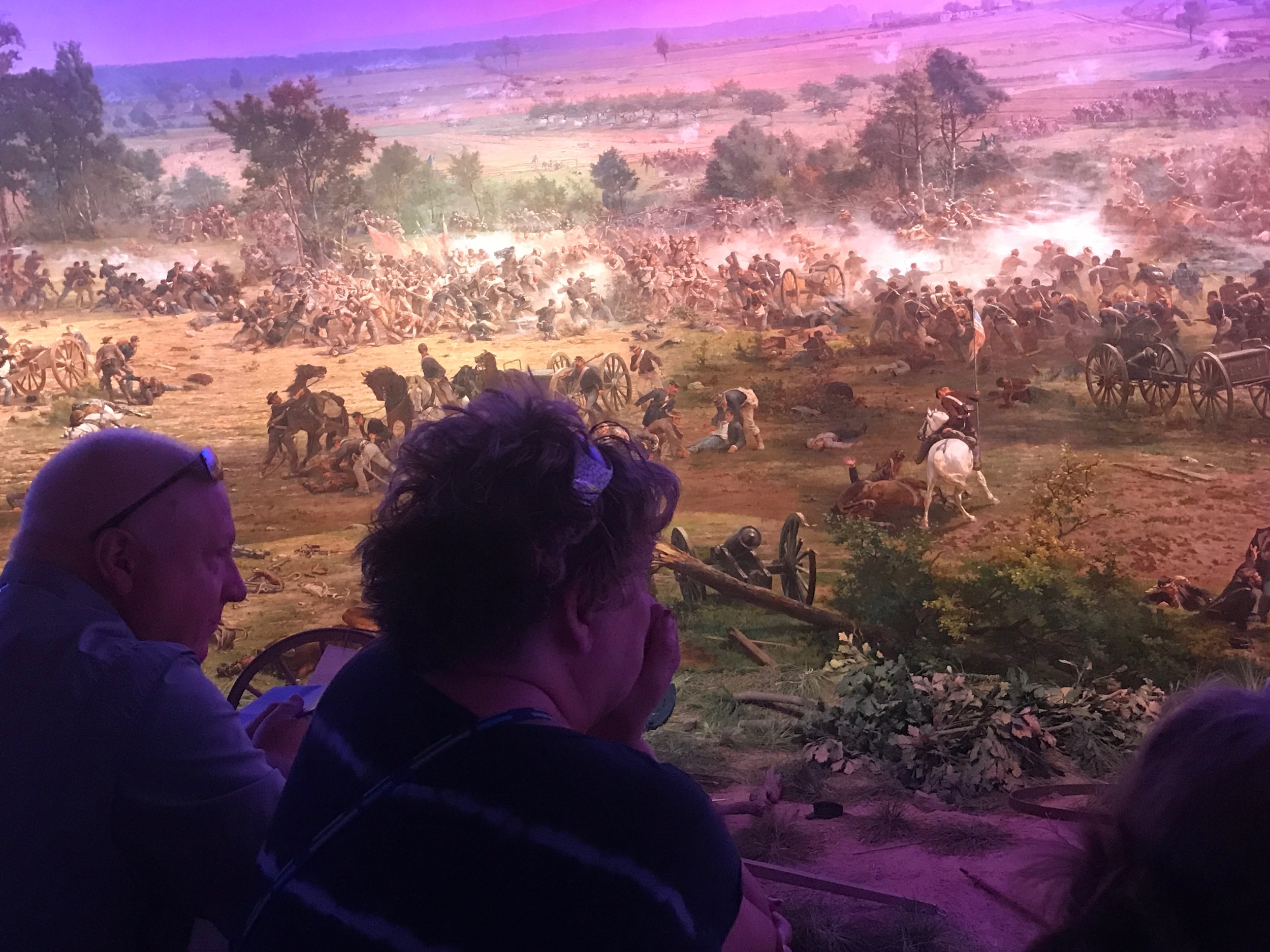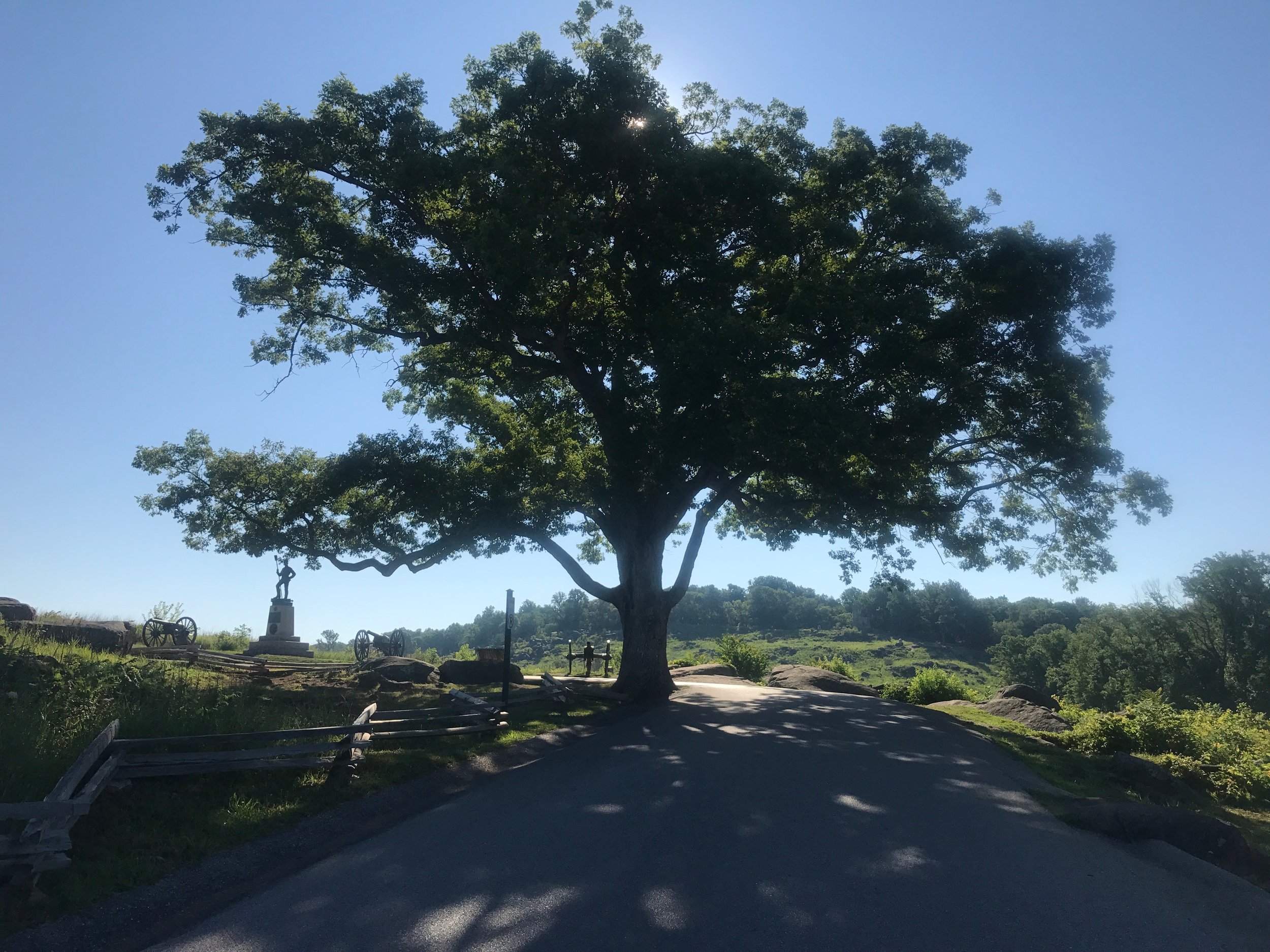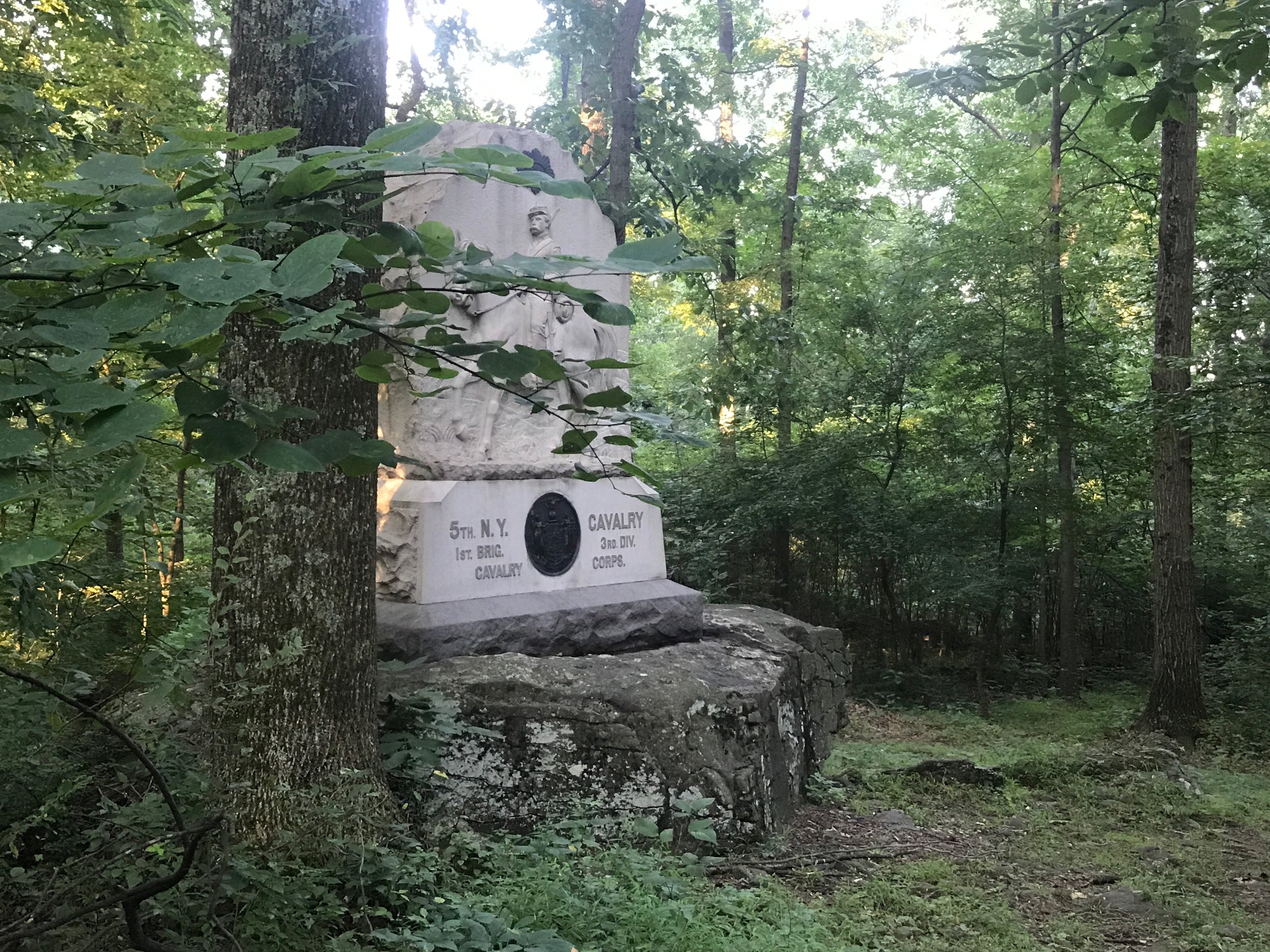The ghosts of Gettysburg
Where history comes with mini-golf
By Rick Holmes
July 21, 2017
If you want to commune with the ghosts of Gettysburg, get out there at dawn.
The stone soldiers look spectral in the morning mist. Come around a bend in the trail and there’s a statue of an officer, big as life, who fell on that spot 154 years ago.
Stone blocks mark the left and right flanks of the position held by the 20th Maine Volunteers on Little Round Top. You can look down the rocky hill, squint and almost see the Alabamians charging up it, over and over again. With his men running out of ammunition, Col. Joshua Chamberlain ordered the Mainers to affix their bayonets for a desperate downhill charge that turned the tide.
When the smoke cleared, the Union held the high ground – on Little Round Top and all along the line of battle. Lee’s army was headed back home. And the woods and farms of Gettysburg were covered with dead and dying Americans. Get there early enough and you might be able to imagine the horror.
At other battlefields I’ve visited – Shiloh and Saratoga most recently – it’s easy to find quiet contemplation any time of the day. But Gettysburg has long been the nation’s most visited battlefield. More than a million people a year walk its pathways. They come by busloads.
Because the battle was fought in and around an established town, business interests were quick to turn battle tourism into an industry. Stores selling artifacts and souvenirs sprang up on soil where thousands died. Theatrical dramas, battlefield-themed arcades, “ghost tours” and miniature golf courses followed. Today, visiting the battlefield is a small part of a Gettysburg family vacation.
Gettysburg’s longest-running attraction is the Cyclorama, which has been called a 19th century version of an IMAX movie. It’s a 360-degree oil painting depicting Pickett’s Charge, painted in 1881. You stand in a dark room, and the canvas is illuminated bit by bit, as a narrator tells the story of the climactic moment on the battle’s third day. You hear the thunder of the cannons, see the smoke and fire.
I saw it as a kid, and thought it was pretty cool.
In Gettysburg there are always skirmishes between preservationists and commercial interests. In 1974, a developer named Thomas R. Ottenstein built a 300-foot tower on private property adjoining the battlefield. From its observation deck visitors could see every corner of the battlefield – and from every corner of the battlefield, people could see an ugly tower lurking over Cemetery Ridge.
Locals ridiculed it as “Ottenstein’s Erection,” and preservationists fought it every step of the way. In 2000, they won: The state seized the property and the National Park Service had the tower imploded. Large crowds came out to watch and cheer.
To move some of the crowds and traffic away from the spot where Pickett’s Charge broke, the NPS opened a new visitor’s center not far from where Ottenstein’s tower stood. It features a forgettable wide-screen movie, a museum heavier on explanation than artifacts, and a steep price-tag - $15 for adults. But the main draw is still the Cyclorama, which is still pretty cool after all these years.
The Gettysburg battlefield is many things. It’s an introductory course for those for whom why and how the Civil War was fought are barely known. It’s a playground for re-enactors and interpreters whose enthusiasm and attention to detail are almost disturbing. It’s a source of endless arguments for historians and finger-pointing by people still smarting from the outcome. It’s a sacred resting place for the thousands who died there.
When history is done badly, sites like these are used to reinforce narratives that favor the victors, to strengthen tribal identity, to stoke ancient resentments and reopen old wounds. But history done right doesn’t take sides or settle for easy answers. History done right is a continuing search for the truth, as illuminated by research and time. It demands empathy for all who fought, with an eye toward their humanity as well as their heroism.
History begins by telling the stories, and there’s nothing wrong with rewarding good listeners with mini golf and ice cream later. But it takes study and reflection to give those stories value, to learn where we’ve come from and what that horrible carnage means to America today. What we get from a visit to a battlefield depends on what we bring to it. It helps to get there early.
Rick Holmes can be reached at rick@rickholmes.net. You can follow his journey at www.rickholmes.net. Like him on Facebook at Holmes & Co, on follow him on Twitter @HolmesAndCo.



